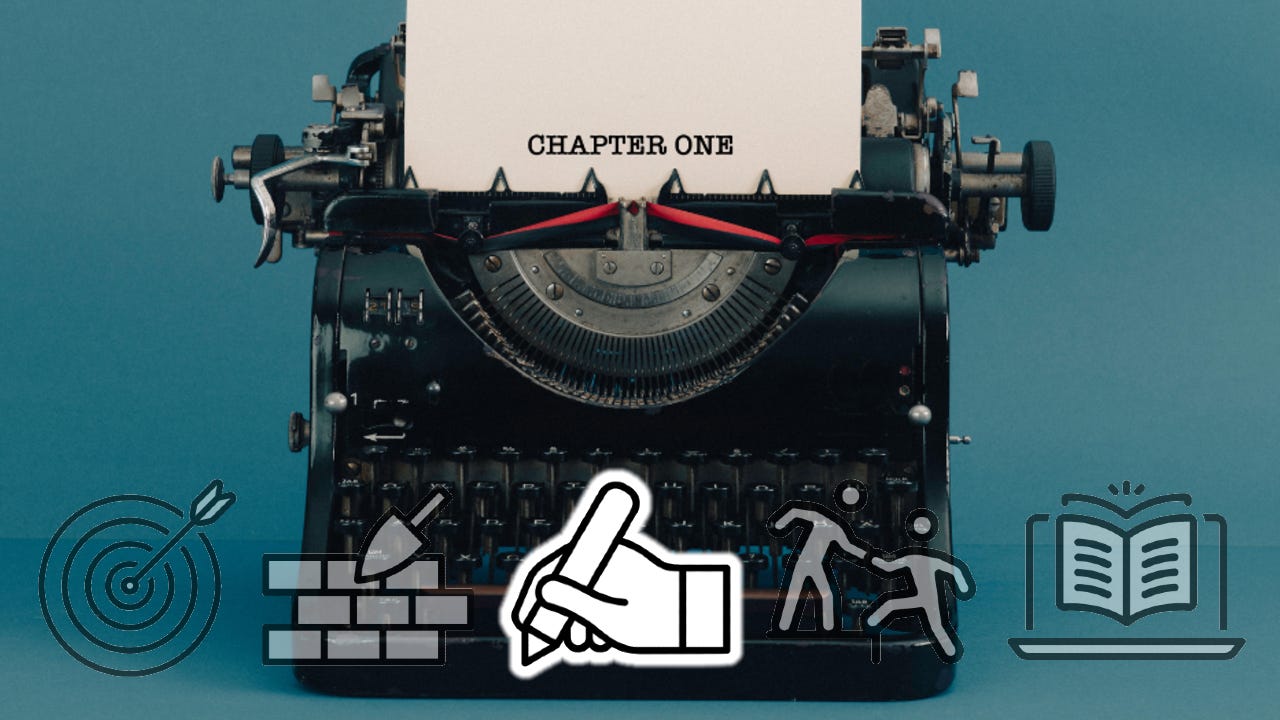25 for 25: Grab your reader’s attention
The beginning of your book is the difference between someone continuing to read and putting your book down.
This essay is part of my 25 for 25 book writing series. The lessons in this series are meant to simplify the book writing and production journey. You can find a guide with links to the entire series here.
The beginning of your book is crucial. It’s the difference between someone continuing to read and putting your book down.
So you really need to hook the reader immediately. And every subsequent sentence needs to build and carry and drive the story forward.
Beyond building suspense and engaging the reader, your book introduction needs to speak to the reader’s needs and allow them to understand what’s in it for them—because a clear takeaway will keep them reading forward.
You need to break down how the book will help or inform the reader and how the message will empower them in their lives.
James Clear does a great job with this in Atomic Habits. He opens by explaining how he sustained an injury in high school baseball, and how after he went to college he still felt like he could be a great player, and how that led him to explore the power of small habits—and how he’s subsequently used those skills to succeed in numerous pursuits.
Small habits helped me fulfill my potential, and since you picked up this book, I’m guessing you’d like to fulfill yours as well. In the pages that follow, I will share a step-by-step plan for building better habits—not for days or weeks, but for a lifetime. While science supports everything I’ve written, this book is not an academic research paper; it’s an operating manual. You’ll find wisdom and practical advice front and center as I explain the science of how to create and change your habits in a way that is easy to understand and apply.
I’m hooked. Are you?
By explaining the reader benefit so clearly, Clear gives the reader motivation to keep reading by detailing what’s in it for them. He does a great job of explaining this new horizon off in the distance that the reader will reach if they keep reading.
Here are some other quick writing tips that could help you be more effective with your writing.
Cut down on passive sentences
Passive sentences suck. Sometimes they’re unavoidable. But they back into a thought like someone sliding into a steamy bath, and no one needs that. They involve “to be” verbs and flip around the actor and action, so the action comes first.
Passive voice
The home run was hit by the batter.
Active voice
The batter slugged a home run.
Drive forward in confidence. Believe in your writing. Lead off with noun-verb sentence structure and use powerful, confident verbs.
Again, sometimes passive voice is unavoidable—but if you can cut your passive rate under five percent, your writing will feel so much stronger.
Adverbs are often unnecessary
As you edit your writing, pinpoint adverbs—words like really, very, and quite—and consider if you need them. They’re often superfluous. Your writing is typically stronger without them.
Keep the reader guessing
Some sentences are short. Choppy. Others should be longer, a locomotive charging forward into the gray unknown and zipping through the curves and barreling down the track in a race against time to reach its destination.
Feel your sentences. Feel the heart and spirit of them. Capture that feeling on the page. Give your reader the chance to feel them, too. Layer your sentences with texture and grit and variety to keep your reader engaged.
Why it matters
If you share your message in a boring way, your reader could check out.
Your reader wants to like your book! Give them every reason to keep reading. Grab their attention from the first page and never let up.
Watch this!
I cover grabbing your reader’s attention in this video.




